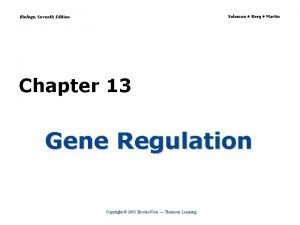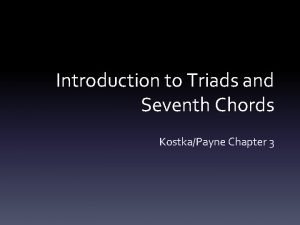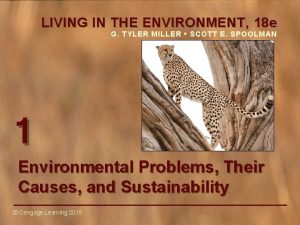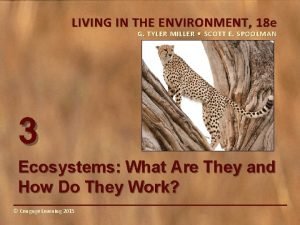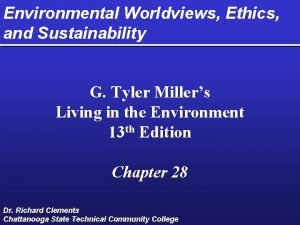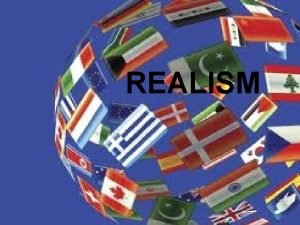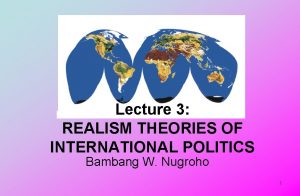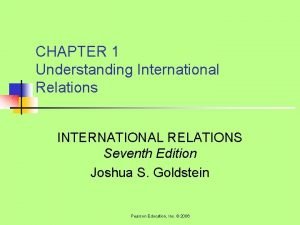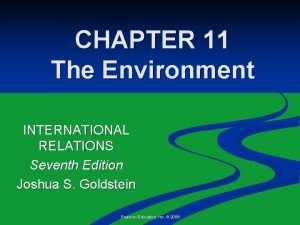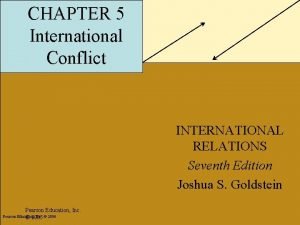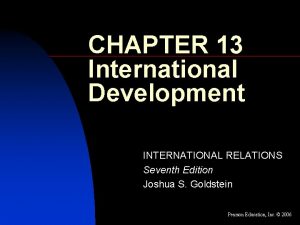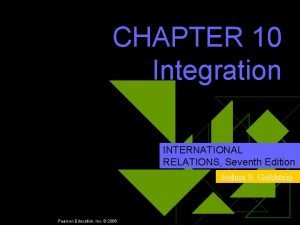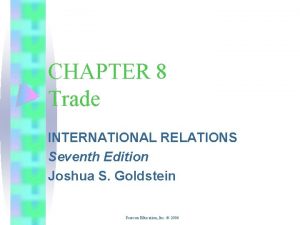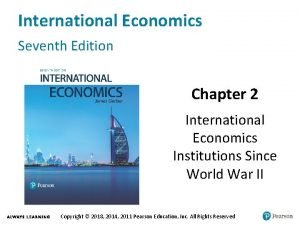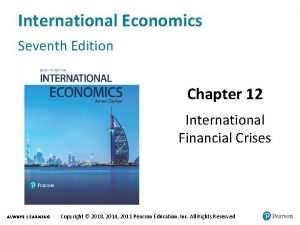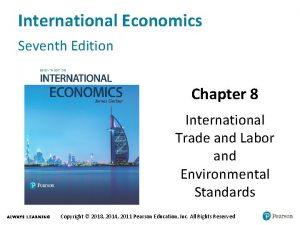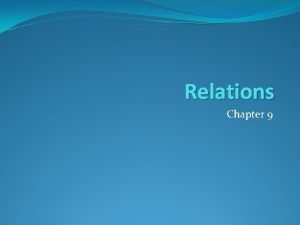CHAPTER 11 The Environment INTERNATIONAL RELATIONS Seventh Edition














- Slides: 14

CHAPTER 11 The Environment INTERNATIONAL RELATIONS Seventh Edition Joshua S. Goldstein Pearson Education, Inc. © 2006

Global Warming n n n n Slow, long-term rise in average world temperatures Caused by emissions of carbon dioxide and other gases Also caused by fossil fuels and their by-products Greenhouse gases Chlorofluorocarbons (CFCs) Ozone Depletion 1987, Montreal Protocol (first agreement) Pearson Education, Inc. © 2006

Biodiversity n n n 1. 4 million species have been identified, but this is only a small fraction of total number, scientists believe Many species already extinct Loss of habitat International Agreements: 1971, Wetlands Convention 1973, Convention on International Trade in Endangered Species (CITES) International Whaling Commission Pearson Education, Inc. © 2006

The Law of the Sea Territorial Waters n 12 miles for shipping n 200 miles for economic activities n Many conflicts, mainly because only about a dozen countries control most territorial waters n Antarctica n Pearson Education, Inc. © 2006

State-Controlled Waters Pearson Education, Inc. © 2006

Natural Resources World Energy n Oil makes up 40 % of world energy consumption; Coal 30 %; and Gas 25 % n 1973, independent Middle East countries, which control about 2/3 of world oil, use their cartel to raise oil prices n Oil prices continue to rise, hurting industrialized economies n Pearson Education, Inc. © 2006

Per Capita Energy Consumption and Net Energy Trade, 2002 Pearson Education, Inc. © 2006

Dividing the Caspian Sea Pearson Education, Inc. © 2006

Other Natural Resources Minerals: They are more evenly distributed throughout the world than oil n United States is most self-sufficient country in relation to minerals n Some minerals are concentrated in one country, e. g. , 2/3 of manganese (for steel) and chromium are in South Africa n Pearson Education, Inc. © 2006

Water 20 % of world’s population lacks safe drinking water n 80 countries suffer water shortages n Some rivers run through many countries, such as the Euphrates River through Turkey, Syria, and Iraq before reaching the Persian Gulf n Water also contains fish and other resources n Pearson Education, Inc. © 2006

Population n n n 6. 4 billion people on Earth in 2004 75 million more people every year 200, 000 more every day In 25 years, 7 to 8 billion 96 % of population growth will be in South Malthusian: population grows faster than food supply; thus, population growth limited by disease and famine Pearson Education, Inc. © 2006

World Population Trends and Projections Pearson Education, Inc. © 2006

The Demographic Transition Pearson Education, Inc. © 2006

Population and AIDS by World Region, 2004 Pearson Education, Inc. © 2006
 Human anatomy and physiology seventh edition marieb
Human anatomy and physiology seventh edition marieb Database system concepts seventh edition
Database system concepts seventh edition Principles of information systems
Principles of information systems Molecular biology of the cell seventh edition
Molecular biology of the cell seventh edition Biology seventh edition
Biology seventh edition Employee relations in public relations
Employee relations in public relations 664-765-4342
664-765-4342 Mis chapter 6
Mis chapter 6 Report
Report Living in the environment
Living in the environment Living in the environment 18th edition
Living in the environment 18th edition Human centered worldview
Human centered worldview Financial environment in business environment
Financial environment in business environment Realist theory of international relations
Realist theory of international relations Realist theory of international relations
Realist theory of international relations




